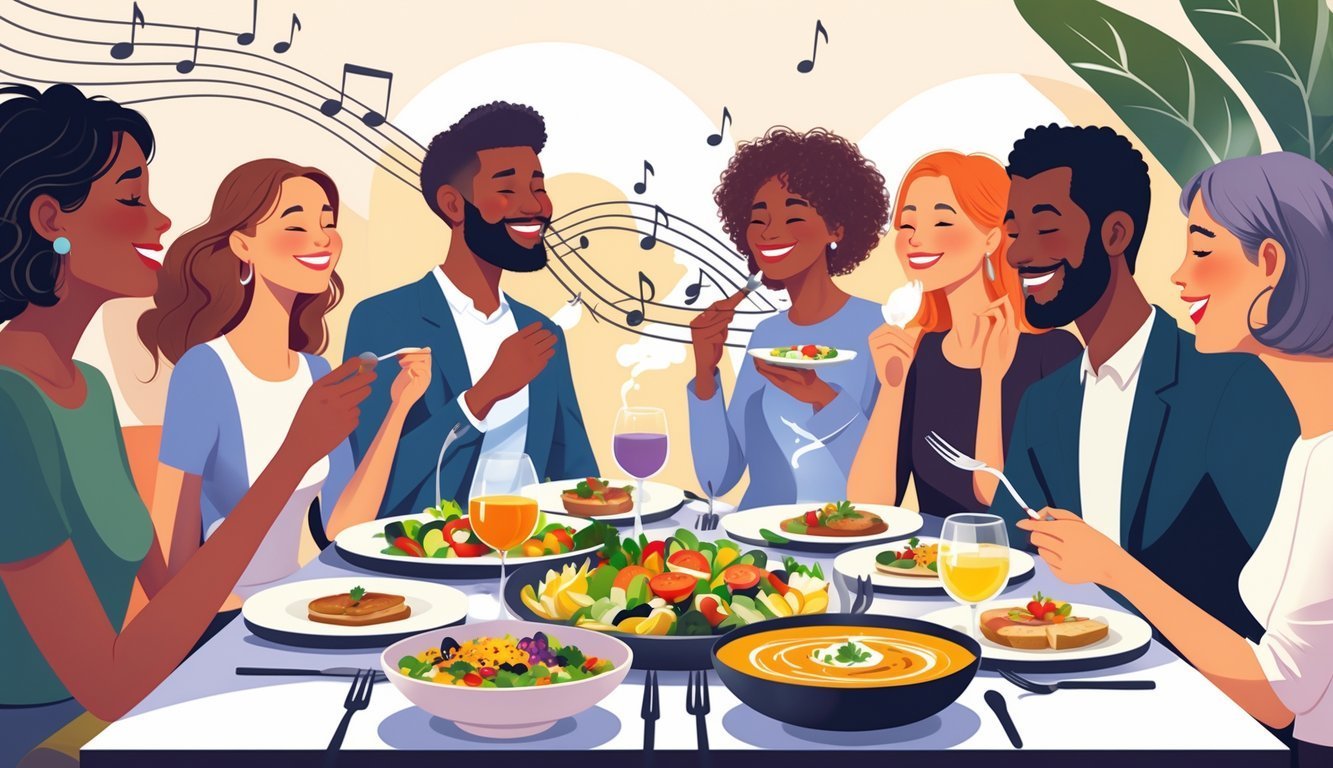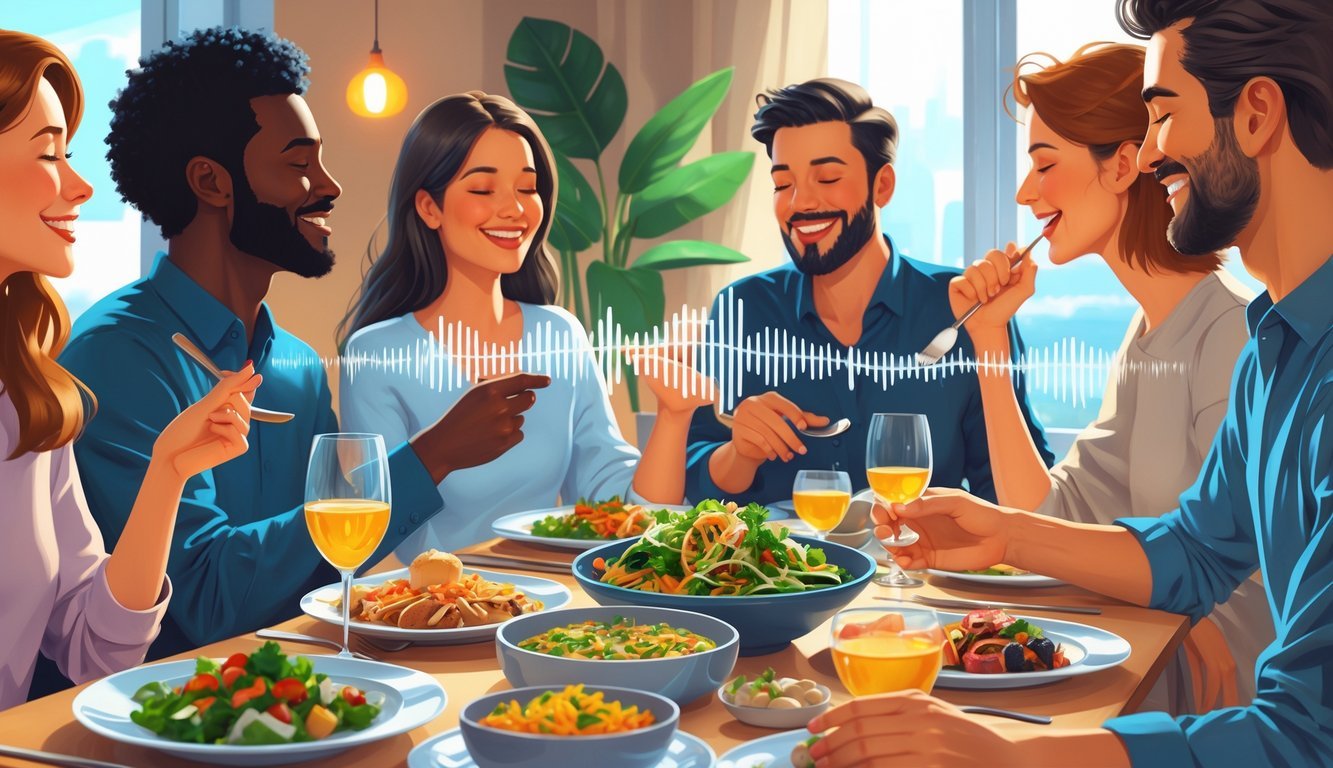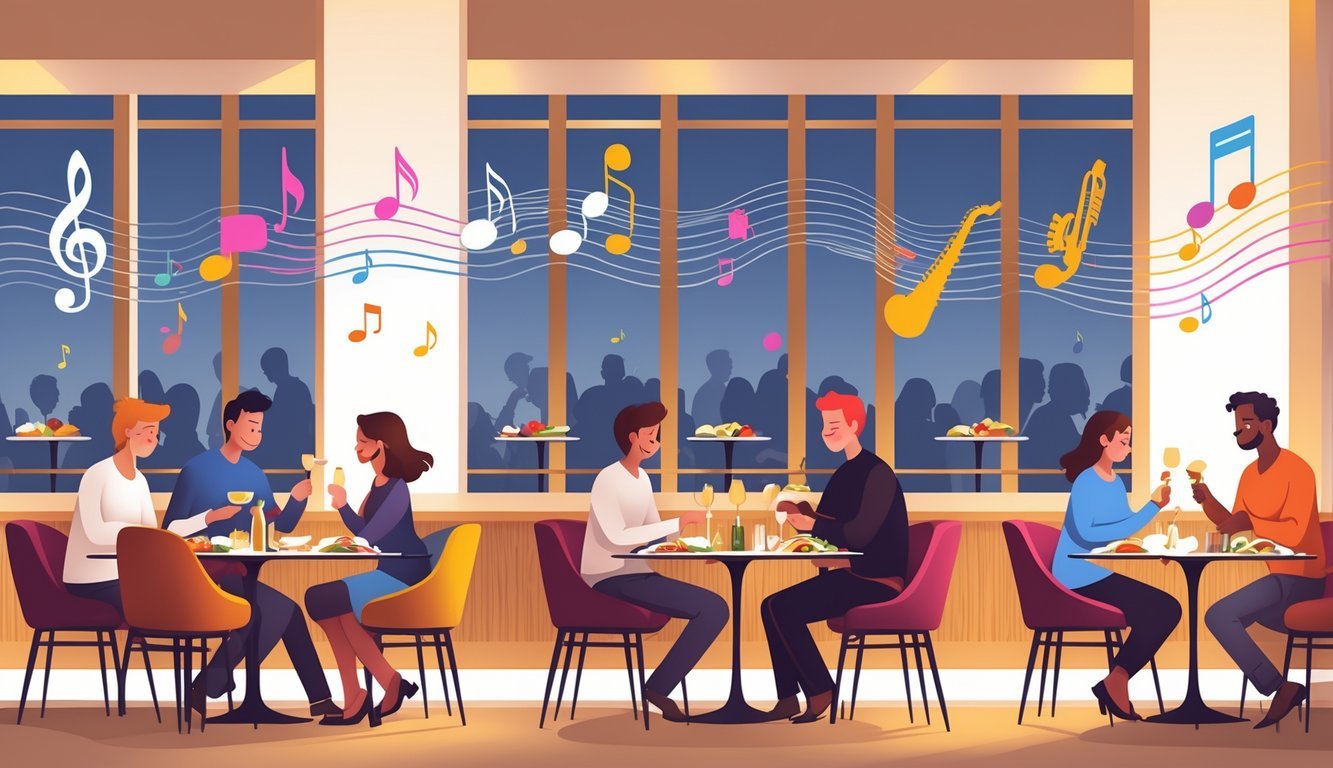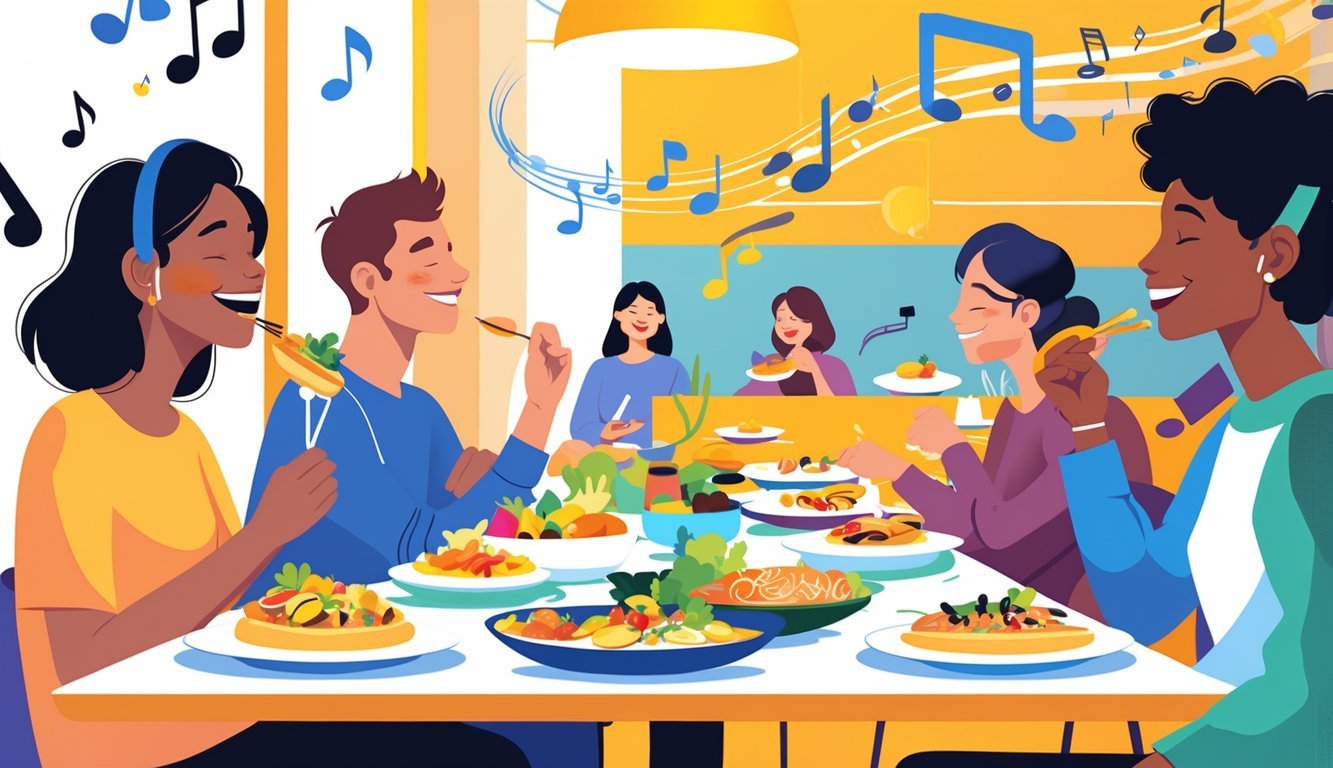PsychNewsDaily Publishers
100 Summit Drive
Burlington, MA, 01803
Telephone: (320) 349-2484
PsychNewsDaily Publishers
100 Summit Drive
Burlington, MA, 01803
Telephone: (320) 349-2484
Background music influences food perception by enhancing flavors and altering dining experiences, with different genres affecting taste and enjoyment levels during meals.

Picture yourself biting into your favorite meal while soft music drifts through the air. Sounds nice, right? Turns out, those tunes aren’t just background noise—they actually change how your food tastes. Recent studies suggest that background music can make food taste better by shaping your perception of flavors.
Different kinds of music can highlight certain tastes, like sweet or bitter, making your meal feel a little more special. Whether you’re into classical, rock, or jazz, the sounds around you set the mood and can totally change how you enjoy your food.
So next time you sit down to eat, listen for the music. Maybe it’s the secret ingredient you didn’t know you needed.

Music really does change the way you enjoy your food. It shapes how you sense flavors and even affects how quickly you eat.
Researchers and chefs have looked into how different sounds can make food taste better or fresher. Your brain links what you hear with what you taste.
When music plays during a meal, your brain does more than just listen—it connects sounds to flavors. Fast music might make you eat quickly, while slow music could help you savor each bite.
Psychologist Charles Spence from Oxford University studies this in a field called gastrophysics. He’s shown that sounds and taste go hand in hand.
Music with high notes can bring out sweet flavors, while deeper sounds might make bitter tastes stand out more. The type of music you hear can actually make your brain focus on certain flavors.
Some people call this digital seasoning, where sound works like a spice for your meal.
One study had over 700 volunteers eat the same food while listening to classical, rock, jazz, or hip-hop music. Their preferences shifted with the music, showing that sound influences how much they enjoyed what they ate.
Famous chefs like Heston Blumenthal and Ferran Adrià have also played with music during meals to boost flavors. Their experiments suggest that picking the right music can make dishes taste better without changing the food itself.
Some restaurants now use custom sound environments to help diners enjoy their food more. In one experiment, they paired salads with “crunchy” noises, making them seem fresher and crispier.
Lab tests show that music tempo can change how fast you eat. Fast beats make people eat quicker, while slower rhythms encourage you to take your time and enjoy the flavors.
Restaurants use these findings to design better dining experiences by picking out the right background music.
Try it yourself—notice how your food tastes with different music. You might be surprised by how much sound changes your enjoyment.

The music playing while you eat can change how you notice flavors and enjoy your meal. Some styles make you focus on sweetness or bitterness, and others just set a vibe that goes with certain foods.
Classical music, like Pavarotti, can make your meal feel fancy. It brings out subtle flavors in pasta or wine and helps you savor each bite slowly.
Jazz, maybe Nina Simone, has a smooth, relaxed feeling. It pairs well with spicy foods, keeping you calm while you tackle bold flavors.
Hip hop, with artists like Ed Sheeran (sometimes he does hip hop, right?) or Justin Bieber, is upbeat and modern. It adds energy to casual foods like Chinese takeout or Indian curry.
Restaurants often use celebrity playlists to set the mood. If you’re out, you might hear Taylor Swift or Ed Sheeran songs picked to make the place feel relaxed and happy.
Upbeat hip hop can make food taste fresher or spicier, while mellow songs can bring out sweetness or smoothness.
Your favorite artist’s music might even nudge you toward certain dishes, just by setting the right mood.
Certain music styles just fit certain foods. Classical goes well with Italian dishes and wine because it brings out subtle notes.
Jazz fits soul food or spicy curries, since its smooth rhythms balance out strong flavors.
Hip hop is great for casual eats like Chinese takeaway or street food. Its lively beat makes bold tastes pop.
| Cuisine | Music Genre | Effect on Food Experience |
|---|---|---|
| Pasta and wines | Classical | Brings out subtle, rich flavors |
| Indian food | Jazz | Balances spicy, strong tastes |
| Chinese takeaway | Hip hop | Adds fun and energy, makes bold flavors stand out |

Background music can change how you taste food and even how long you stick around at a restaurant. It shapes your mood, affects the texture you notice, and sometimes even changes what you spend. The style and volume of the music matter too.
Music influences your senses, making food taste different. Sounds might highlight certain flavors or change how you experience texture.
Slow music tends to make you stay longer and maybe even spend more, especially on drinks. It also makes meals feel more enjoyable.
Music that matches the restaurant’s mood or the food style can really improve your dining experience. Calm or slow music often helps people enjoy their food more.
Sound can change how strong or mild flavors seem. It also affects how you feel about food texture, since your brain links what you hear with what you taste.
Studies suggest that music improves how you experience food. It can make textures feel different and enhance flavors. Music sets the mood, which affects how much you like your meal.
Restaurants play music to set the mood. The right tunes help people unwind and sometimes even stay a bit longer.
Music can encourage folks to spend more, too. It’s a subtle way to support the brand and shape how the whole dining experience feels.